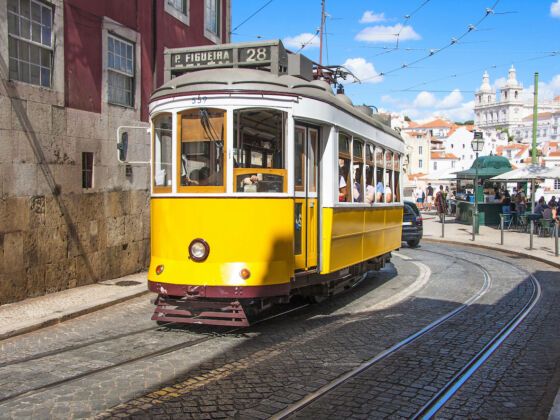Point of departure: Martim Moniz
As I wait to catch the tram, I see a group a Spanish teenagers, a couple of foreign tourists tall and blond, a hunchbacked old lady with a shopping bag. Across the road, an old man with a cane and a beret is seated on a park bench and a group of African men sit on the grass under a tree. Two Indians pass by and hug each other, and a man with a turban joins the ones seated.
